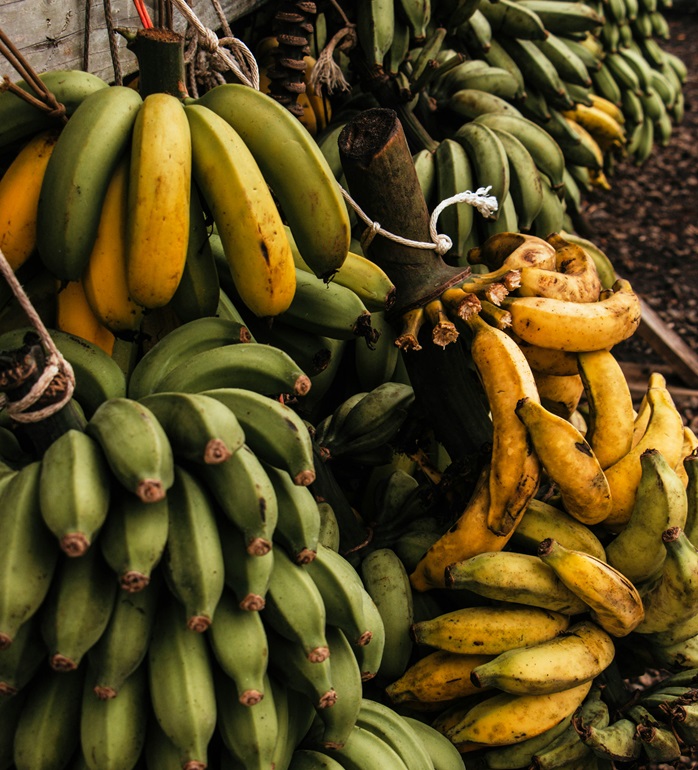1. Hungary, Estonia, and Singapore Lead the Way in New Report
In a significant shift from its previous methodology, the World Bank has launched the “Business Ready 2024” report, a revamped version of the former “Doing Business” rankings. This new report evaluates the business climates of 50 economies across three critical pillars: regulatory framework, public services, and operational efficiency. The top performers in these categories are Hungary, Estonia, and Singapore, respectively.
Hungary: Leading in Regulatory Framework
Hungary has emerged as the leader in the regulatory framework pillar, scoring 78.23 points. This category assesses the quality and efficiency of regulations that businesses must comply with. The narrow scoring gap between Hungary and the other top contenders, such as Croatia, highlights the competitive nature of this pillar. The high score indicates that Hungary has successfully implemented regulations that facilitate business operations while maintaining necessary oversight.
Estonia: Excellence in Public Services
Estonia has been recognised for its outstanding public services, achieving a score of 73.31 points. This pillar evaluates the effectiveness of public services such as electricity, tax administration, and other essential services that businesses rely on. Estonia’s top ranking reflects its ability to translate a robust regulatory framework into efficient and accessible public services, creating a conducive environment for business growth.
Singapore: Operational Efficiency Champion
Singapore continues to excel in operational efficiency, scoring an impressive 87.33 points. This pillar measures how effectively businesses can operate within the regulatory environment, including factors like ease of compliance and the efficiency of public services. Singapore’s high score underscores its reputation as a global business hub where firms can operate smoothly and efficiently.
A New Approach to Business Climate Assessment
The “Business Ready 2024” report marks a departure from the controversial “Doing Business” rankings, which were discontinued in 2021 due to data irregularities and allegations of manipulation. The new report aims to provide a more balanced and comprehensive assessment of business climates by focusing on a broader range of indicators and de-emphasizing country rankings.
Norman Loayza, director of the World Bank’s Global Indicators Group, emphasized that the new report seeks to offer a more nuanced understanding of business environments. “We actually don’t even use the word rank in the report,” Loayza stated, highlighting the shift towards a more qualitative assessment.
Conclusion
The top rankings of Hungary, Estonia, and Singapore in the World Bank’s “Business Ready 2024” report demonstrate their commitment to creating favorable business environments. By excelling in regulatory framework, public services, and operational efficiency, these countries set a benchmark for others to follow in fostering business-friendly climates.
2. Indian Semiconductors Take Off

Sylwia Bartyzel via Unsplash
India’s journey towards becoming a global semiconductor manufacturing hub is a testament to its strategic vision and relentless pursuit of technological advancement. This article delves into the milestones, challenges, and future prospects of India’s semiconductor industry.
The Vision
India’s ambition to establish itself as a key player in the semiconductor sector is driven by the need to reduce dependency on imports and enhance national security. The government’s initiatives, such as the India Semiconductor Mission, aim to create a robust ecosystem for semiconductor manufacturing. This mission aligns with the broader goals of the “Make in India” campaign and the G20 aspirations of “One Earth, One Family, One Future.”
Key Milestones
One of the most significant milestones in this journey is the groundbreaking agreement between India and the US to establish a semiconductor fabrication plant in India. This plant will produce advanced semiconductors, including infrared, gallium nitride, and silicon carbide chips, primarily for military and critical telecommunications applications. This collaboration marks the first semiconductor fabrication alliance between India and the US, highlighting the strategic importance of this initiative.
Economic Impact
The establishment of semiconductor manufacturing facilities is expected to have a profound impact on India’s economy. It will create numerous jobs in manufacturing, engineering, management, logistics, and supply chain services. The increased demand for skilled labor will drive enhancements in training and education, benefiting various high-tech industries. Additionally, higher employment levels will boost disposable income, positively influencing local businesses and services.
Challenges Ahead
Despite the promising outlook, the semiconductor sector in India faces several challenges. Navigating the complex regulatory landscape and addressing inadequate local infrastructure are significant hurdles. Moreover, the industry must overcome supply chain dependencies and ensure sustainable disposal of hazardous waste. Addressing these challenges will be crucial for the successful implementation of semiconductor projects.
Future Prospects
Looking ahead, India’s semiconductor ambitions are set to transform the country into a major player in the global supply chain. With proactive actions, technological advancements, and strategic investments, India aims to be among the top five global destinations for semiconductor manufacturing by 2030. The collaboration between Tata Group and Taiwan’s PSMC to build an AI-enabled greenfield Fab in Gujarat is a step in this direction, expected to create over 20,000 jobs and reduce India’s dependency on imports.
Conclusion
India’s journey from vision to reality in semiconductor manufacturing is a remarkable story of strategic foresight and collaborative efforts. As the country continues to build its capabilities and address challenges, it is poised to play a pivotal role in the global semiconductor landscape.
3. VMI Group New Gujarat facility

Digant Dalal via Unsplash
Vadodara, Gujarat – In a significant move to bolster its presence in the Indian market, VMI Group, a leading Dutch provider of automated tyre building machines, has inaugurated a new facility in Vadodara, Gujarat. This strategic expansion underscores VMI’s commitment to the rapidly growing Indian automotive and tyre sectors.
The new facility, which will house engineering, service, and research operations, is set to enhance VMI’s global engineering network and R&D capabilities. By the end of 2024, the site is expected to employ around 50 engineers, focusing on maintenance, upgrades, and support services.
Harm Voortman, VMI’s Chief Executive Officer, expressed his enthusiasm about the new venture, stating, “We at VMI are excited about the prospects for the Indian economy and the growing tyre market. This new facility, combining service and engineering capabilities, forms a key part of our growth strategy.” He further highlighted that this expansion represents a new level of commitment to India, which is now one of the world’s largest and most dynamic economies.
The facility will also cater to the increasing demand for software, machine learning, and AI-enabled automation solutions, positioning VMI at the forefront of technological advancements in the industry.
Part of the TKH Group, VMI operates in several countries, including Germany, Poland, the US, Brazil, China, Malaysia, India, and Thailand, employing around 1800 people globally.
With this new facility, VMI Group is poised to play a crucial role in supporting the Indian automotive industry’s growth, providing advanced solutions and services that meet the evolving needs of the market.
4. South Africa Gateway to Africa

Larry Li via Unsplash
South Africa stands as a pivotal player in the realm of international trade, particularly within the African continent. Its strategic geographical position, robust infrastructure, and advanced manufacturing capabilities make it an essential gateway for trade across Africa.
Strategic Importance
South Africa’s role in trade treaties is underscored by its participation in significant agreements such as the African Continental Free Trade Agreement (AfCFTA). This agreement aims to eliminate trade barriers across the continent, fostering economic integration and boosting intra-African trade. With a market encompassing over 1.3 billion people, the AfCFTA is set to transform the economic landscape of Africa, and South Africa is at the forefront of this transformation.
Economic and Regulatory Framework
The country’s mature banking system, solid legislative framework, and significant economic output—boasting a nominal GDP of around $400 billion—underscore its importance. South Africa’s Protection of Investment Act 22 of 2015 further enhances its attractiveness by providing a balanced environment for both local and international investors.
Manufacturing and Natural Resources
South Africa is the top manufacturing country in Africa, according to the African Bank Development Group’s Africa’s Industrialization Index 2020. Its manufacturing sector is complemented by abundant natural resources, including cobalt, nickel, copper, lithium, and rare earth minerals, which are crucial for future technologies.
Gateway to Global Markets
South Africa’s trade treaties with major economies, such as the United States under the African Growth and Opportunity Act (AGOA), highlight its role as a critical gateway to Africa. These treaties not only facilitate trade but also strengthen diplomatic and economic ties, ensuring mutual benefits for all parties involved.
Conclusion
In conclusion, South Africa’s strategic position, economic strength, and proactive participation in trade agreements make it an indispensable gateway to Africa. As global trade dynamics evolve, South Africa’s role will undoubtedly become even more significant, driving growth and development across the continent.
5. Philippines to Benefit from New Free Trade Agreement with South Korea

Abbs Johnson via Unsplash
Philippines is set to experience a significant boost in its export economy, with nearly 97 percent of its exports to South Korea expected to enjoy either zero or reduced tariffs under a newly ratified free trade agreement (FTA). This development marks a pivotal moment in the economic relationship between the two nations, promising enhanced market access and competitive advantages for Filipino exporters.
Key Benefits of the FTA
The FTA, which was signed recently, aims to eliminate or reduce tariffs on a wide range of products traded between the Philippines and South Korea. According to Trade Undersecretary Allan Gepty, this agreement complements existing trade agreements such as the ASEAN-Korea FTA and the Regional Comprehensive Economic Partnership (RCEP), further solidifying the Philippines’ position in the regional trade landscape.
Impact on Major Export Sectors
One of the primary beneficiaries of this agreement is the Philippine banana industry. Historically, the Philippines has held a dominant market share in South Korea’s fresh banana market. However, competition from countries like Vietnam and Ecuador has eroded this share over the years. The new FTA is expected to restore the competitiveness of Philippine bananas by gradually removing the existing 30 percent tariff over the next five years.
In addition to bananas, other sectors such as automotive parts, electronics, and agricultural products are poised to benefit from the reduced trade barriers. The agreement also opens up opportunities for economic and technical cooperation, including partnerships in research and development of electric vehicles, mineral processing, and the automotive industry.
Broader Economic Implications
The FTA is anticipated to significantly enhance the export competitiveness of Filipino products in the South Korean market. By reducing tariffs, the agreement lowers the cost of Philippine goods, making them more attractive to South Korean consumers and businesses. This is expected to lead to increased export volumes and, consequently, a positive impact on the Philippine economy.
Moreover, the agreement underscores the Philippines’ commitment to strengthening its trade ties with key partners and participating actively in the global trade arena. It also highlights the strategic importance of South Korea as a trading partner, given its advanced economy and robust demand for various goods and services.
Conclusion
The ratification of the FTA between the Philippines and South Korea represents a significant milestone in bilateral trade relations. With nearly 97 percent of Philippine exports set to benefit from zero or reduced tariffs, the agreement promises to boost the country’s export economy and enhance its competitive edge in the South Korean market. Filipino entrepreneurs and exporters are encouraged to seize this opportunity and leverage the advantages offered by the new trade agreement.
6. Intra-African Trade Set to Double by 2029, Says AfCFTA Leader

Sergey Pesterev via Unsplash
In a recent statement, Wamkele Mene, the Secretary General of the African Continental Free Trade Area (AfCFTA), expressed optimism about the future of intra-African trade. He believes that trade within the continent could double over the next five years, driven by the implementation of the AfCFTA.
The Promise of AfCFTA
The AfCFTA, established in February 2020, is the world’s largest free trade area by the number of participating countries, covering a market of 1.3 billion people and a combined GDP of $3.4 trillion. The agreement aims to boost economic growth, intra-African trade, and investment across the continent. Despite the challenges posed by the COVID-19 pandemic, which significantly slowed down initial implementation, the AfCFTA has made substantial progress in recent years.
Challenges and Opportunities
One of the primary challenges highlighted by Mene is the fragmented nature of African markets. With 47 state parties to the agreement, the continent has a diverse range of economic conditions, currencies, and levels of development. This diversity makes economic integration a complex task. However, Mene remains optimistic, noting that the AfCFTA has already concluded all necessary protocols, including those for digital trade, rules of origin, and dispute settlement mechanisms.
Economic Impact
The potential economic impact of the AfCFTA is significant. According to the Economic Commission for Africa, the agreement could increase intra-African trade from its current 18% of total trade to 50% by 2030. This increase would be driven by the reduction of tariffs, improved infrastructure, and enhanced trade facilitation measures. Additionally, the AfCFTA is expected to create new opportunities for businesses and entrepreneurs across the continent, fostering innovation and economic diversification.
Looking Ahead
As Africa continues to navigate the complexities of economic integration, the AfCFTA stands as a beacon of hope for the continent’s future. The upcoming AfCFTA Business Forum in Kigali, Rwanda, will bring together leaders from both the public and private sectors to discuss the challenges and opportunities ahead.
Featured image Mahsha Ziapour via Unsplash







